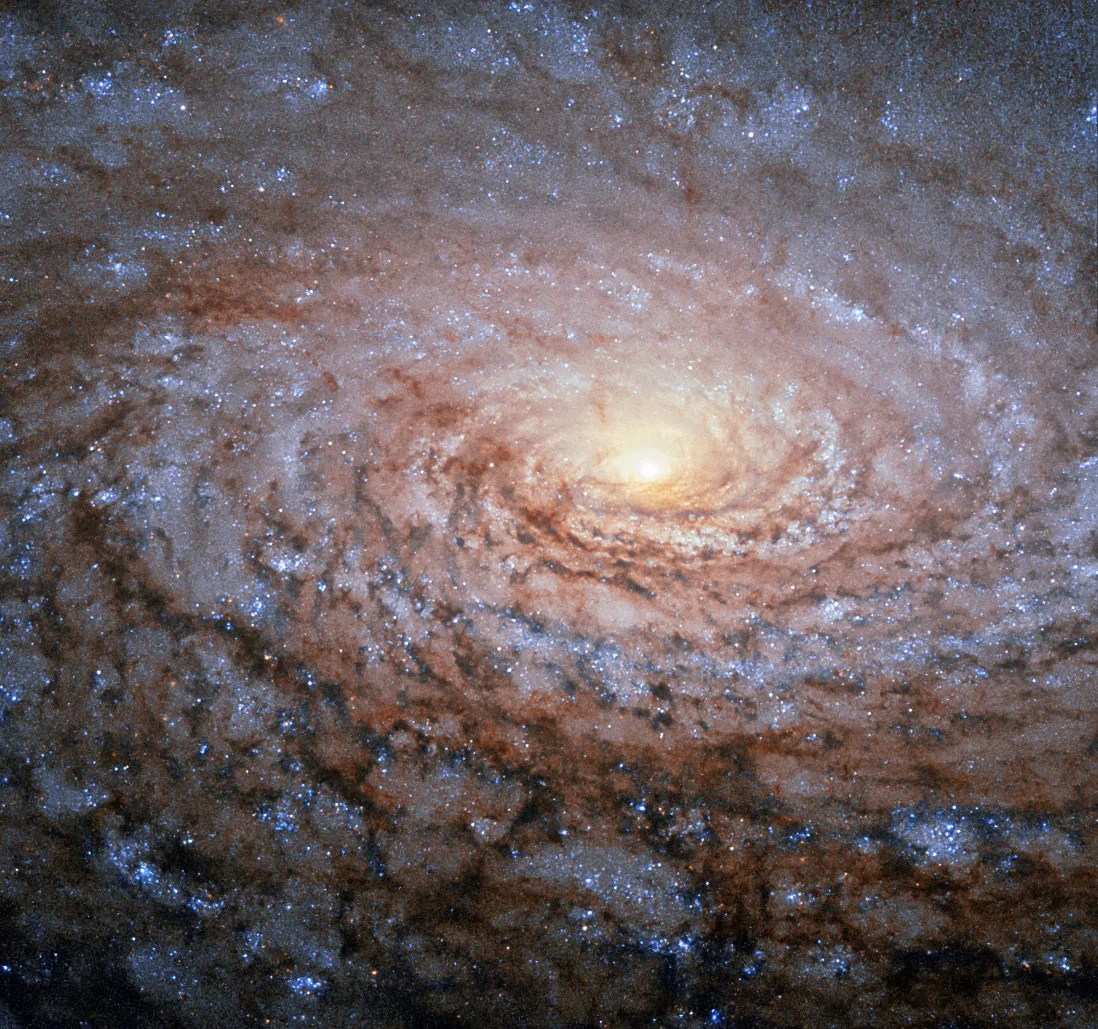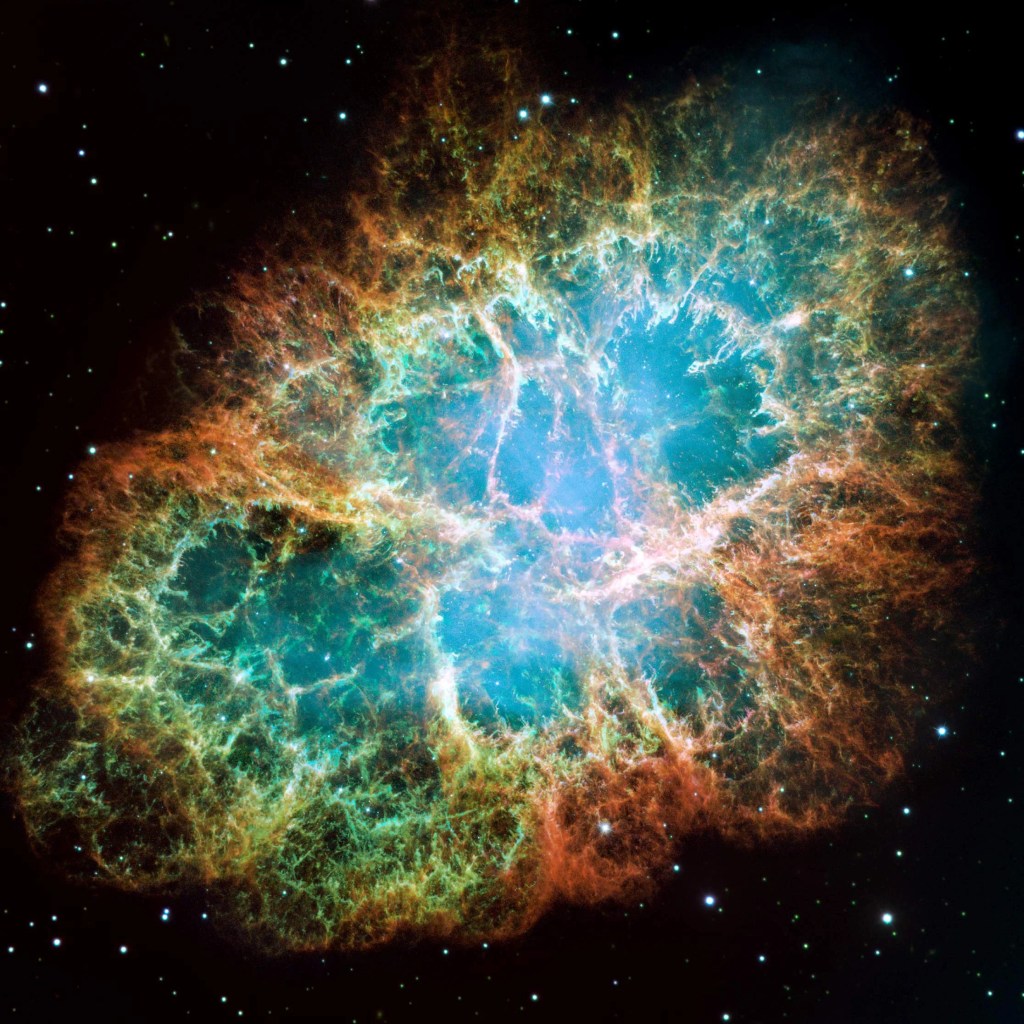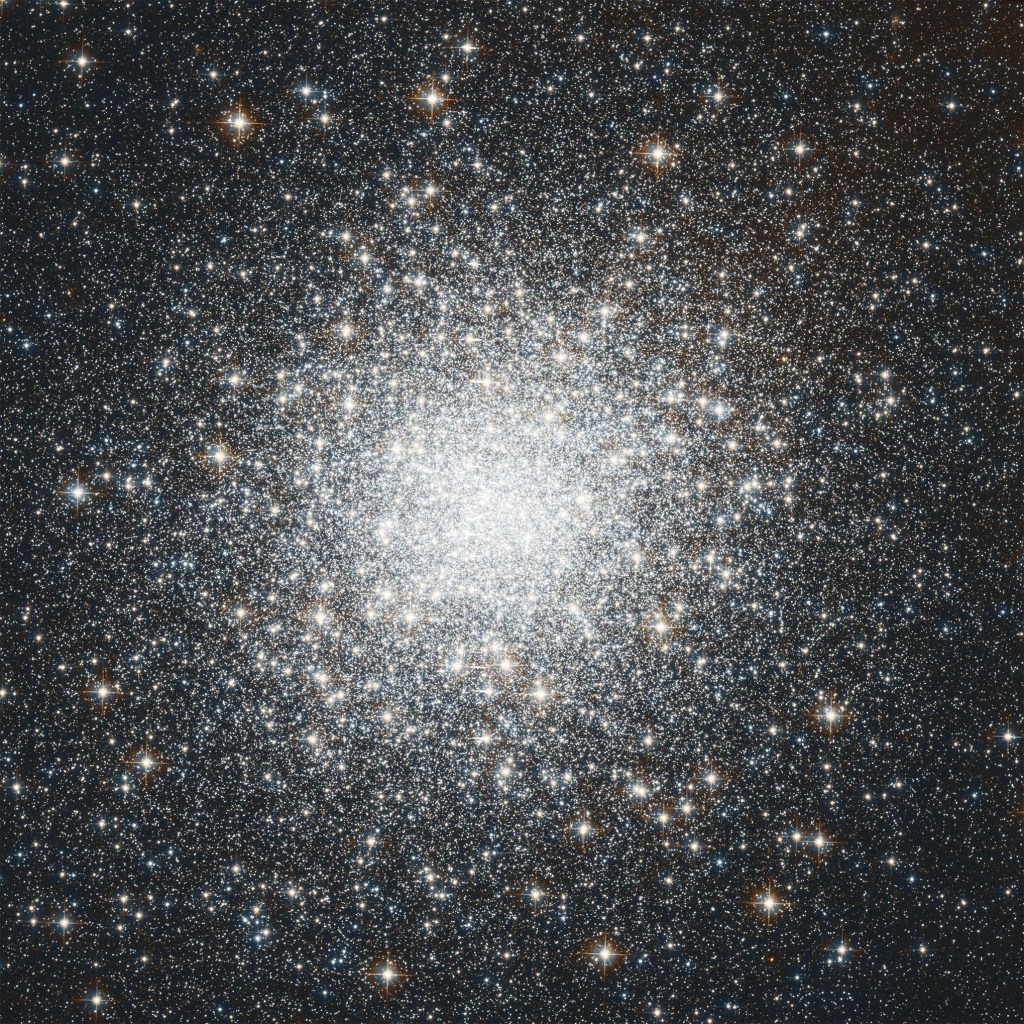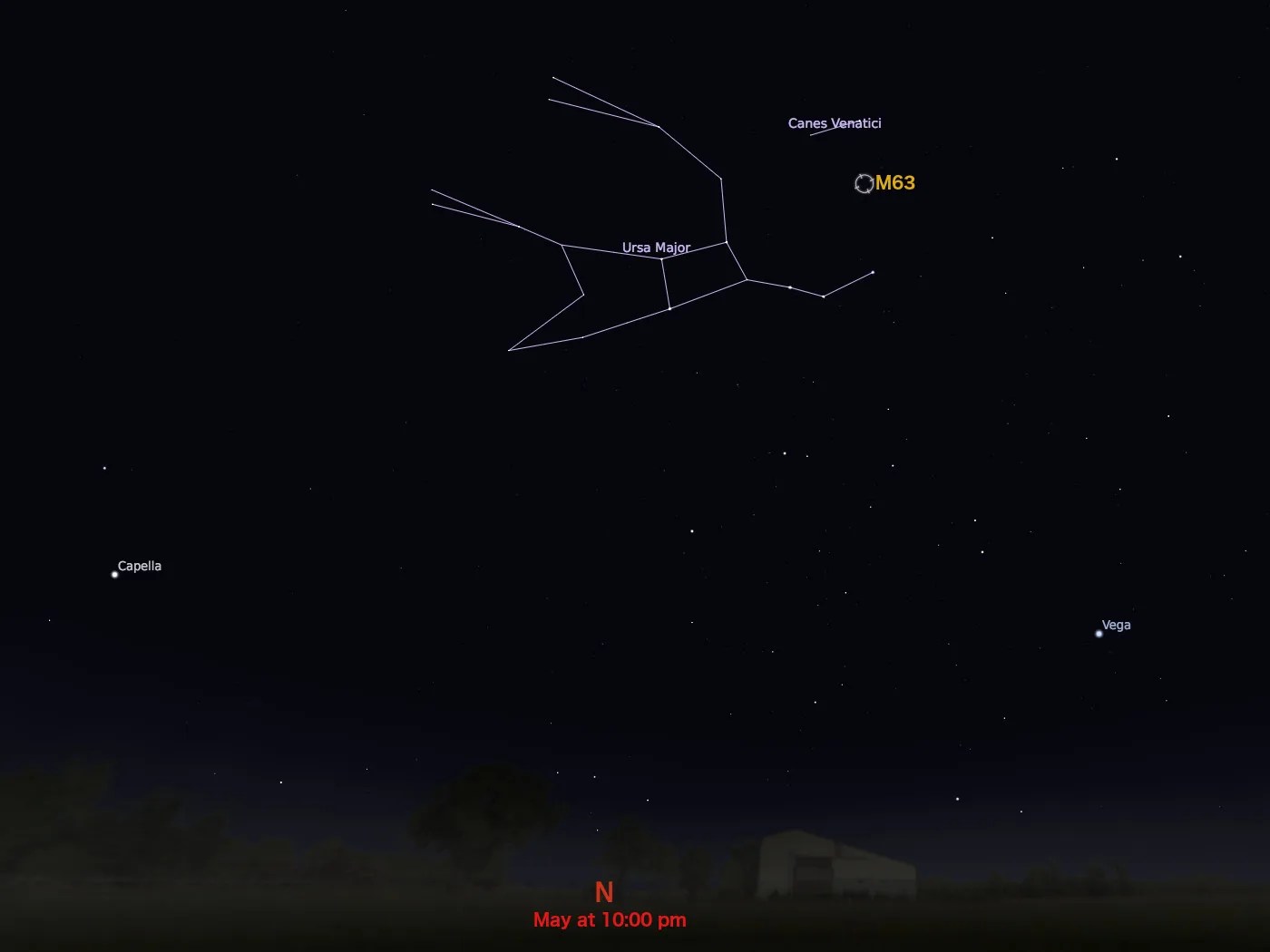Messier 63
This flocculent galaxy is a type of spiral without well defined spiral arms.
Distance
27 million light-years
Apparent Magnitude
9.3
constellation
Canes Venatici
object type
Spiral Galaxy

Star formation is one of the most important processes in shaping the universe. In addition to birthing new stars, it gives rise to planetary systems and plays a pivotal role in the evolution of galaxies. Yet there is still much that astronomers do not understand about this fundamental process. The driving force behind star formation is particularly unclear for a type of galaxy called a flocculent spiral. Unlike grand-design spiral galaxies, flocculent spiral galaxies do not have well defined spiral arms. Instead, they appear to have many discontinuous arms.
M63, also known as the Sunflower galaxy, is one such flocculent spiral galaxy. Although it only has two arms, many appear to be winding around its yellow core in this image captured by Hubble. The arms shine with the radiation from recently formed blue stars and can be more clearly seen in infrared observations. By imaging flocculent spiral galaxies like M63, astronomers hope to gain a better understanding of how stars form in such systems.
The Sunflower galaxy was discovered in 1779 by the French astronomer Pierre Méchain and was the first of 24 objects that Méchain would contribute to Charles Messier’s catalog. The galaxy is located roughly 27 million light-years from Earth in the constellation Canes Venatici. It has an apparent magnitude of 9.3 and appears as a faint patch of light in small telescopes. The best time to observe M63 is during May.
For more information about Hubble’s observations of M63, see:
Explore Hubble's Messier Catalog
The following pages contain some of Hubble’s best images of Messier objects.

Overview The Messier catalog, begun by astronomer Charles Messier in the 18th Century and revised over the years, includes some…

Better known as the Crab Nebula, Charles Messier originally mistook Messier 1 for Halley’s Comet, which inspired him to create…

Hubble's image of Messier 2 is comprised of visible and infrared wavelengths of light.



































